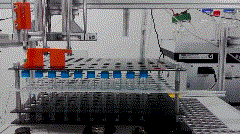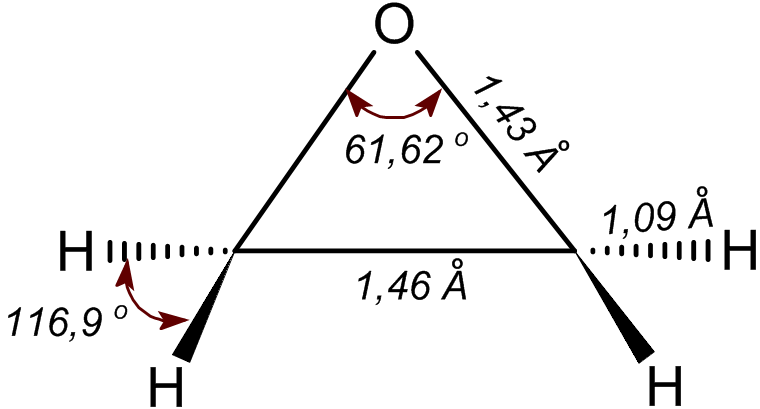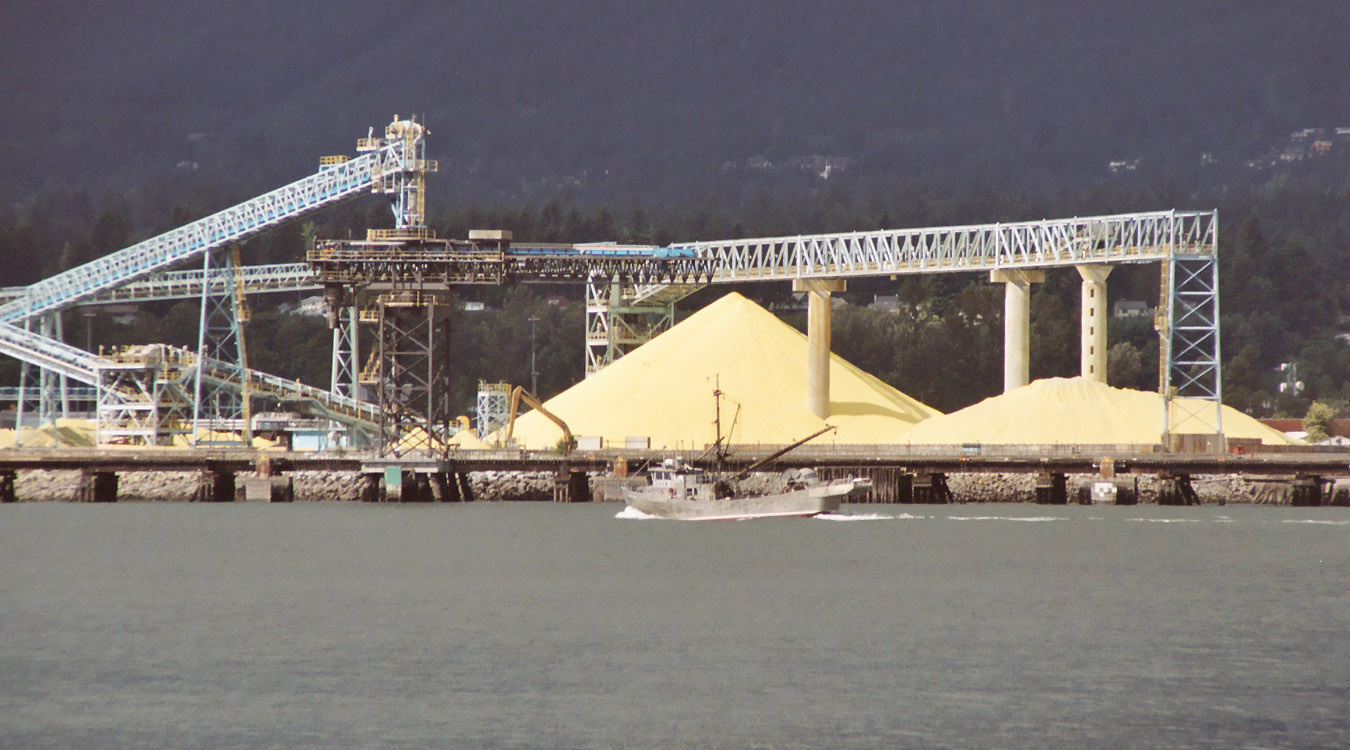|
Wacker Process
The Wacker process or the Hoechst-Wacker process (named after the chemical companies of the same name) is an industrial chemical reaction: the aerobic oxidation of ethylene to acetaldehyde in the presence of catalysis, catalytic, aqueous palladium(II) chloride and copper(II) chloride. : The Tsuji-Wacker oxidation refers to a family of reactions inspired by the Wacker process. In Tsuji-Wacker reactions, palladium(II) catalyzes transformation of Α-olefin, α-olefins into carbonyl compounds in various Solvent, solvents. : The development of the Wacker process popularized modern organopalladium chemistry, and Tsuji-Wacker oxidations remain in use today. History The Wacker process was one of the first homogeneous catalysis with organopalladium chemistry applied on an industrial scale. In an 1893 doctoral dissertation on Marcellus natural gas trend, Pennsylvanian natural gas, Francis Clifford Phillips had reported that palladium(II) chloride oxidized ethylene to acetaldehyde, but the ... [...More Info...] [...Related Items...] OR: [Wikipedia] [Google] [Baidu] [Amazon] |
|
 |
Chemical Reaction
A chemical reaction is a process that leads to the chemistry, chemical transformation of one set of chemical substances to another. When chemical reactions occur, the atoms are rearranged and the reaction is accompanied by an Gibbs free energy, energy change as new products are generated. Classically, chemical reactions encompass changes that only involve the positions of electrons in the forming and breaking of chemical bonds between atoms, with no change to the Atomic nucleus, nuclei (no change to the elements present), and can often be described by a chemical equation. Nuclear chemistry is a sub-discipline of chemistry that involves the chemical reactions of unstable and radioactive Chemical element, elements where both electronic and nuclear changes can occur. The substance (or substances) initially involved in a chemical reaction are called reagent, reactants or reagents. Chemical reactions are usually characterized by a chemical change, and they yield one or more Product (c ... [...More Info...] [...Related Items...] OR: [Wikipedia] [Google] [Baidu] [Amazon] |
|
Wacker Chemie
Wacker Chemie AG is a German multinational chemical company which was founded in 1914 by Alexander Wacker. The company is controlled by the Wacker family holding more than 50 percent of the shares. The corporation operates more than 25 production sites in Europe, Asia, and the Americas. The product range includes silicone rubbers, polymer products like ethylene vinyl acetate redispersible polymer powder, chemical materials, polysilicon and wafers for the semiconductor industry. The company sells its products in more than 100 countries. As of 31 December 2015, 16,972 employees have been with Wacker. Corporate annual sales in 2015, were about 5,3 billion Euros, up 10% compared to 2014. History On 13 October 1914, Alexander Wacker established "Dr. Alexander Wacker, Gesellschaft für elektrochemische Industrie KG". The production plant in Burghausen, Upper Bavaria was constructed in 1916 and in December that year the first acetylaldehyde and acetic acid products were manufactu ... [...More Info...] [...Related Items...] OR: [Wikipedia] [Google] [Baidu] [Amazon] |
|
|
Hoechst AG
Hoechst AG () was a German chemicals, later life sciences, company that became Aventis Deutschland after its merger with France's Rhône-Poulenc S.A. in 1999. With the new company's 2004 merger with Sanofi-Synthélabo, it became a subsidiary of the resulting Sanofi-Aventis pharmaceuticals group. History The company was founded in 1863 as "Teerfarbenfabrik Meister, Lucius & Co." in Höchst, near Frankfurt and changed its name some years later to "Teerfarbenfabrik Meister Lucius & Brüning". In 1880, it became a stock company "Farbwerke vorm. Meister Lucius & Brüning AG". For the international market the name was simplified to "Farbwerke Hoechst AG". Until 1925, the Hoechst AG was independent. In 1916, the Hoechst AG was one of the co-founders of IG Farben, an advocacy group of Germany's chemicals industry to gain industrial power during and after World War I. In 1925, IG Farben turned from an advocacy group into the well-known conglomerate. World War II Various Hoechs ... [...More Info...] [...Related Items...] OR: [Wikipedia] [Google] [Baidu] [Amazon] |
|
|
Parent Corporation
A holding company is a company whose primary business is holding a controlling interest in the securities of other companies. A holding company usually does not produce goods or services itself. Its purpose is to own stock of other companies to create a corporate group. In some jurisdictions around the world, holding companies are called parent companies, which, besides holding stock in other companies, can conduct trade and other business activities themselves. Holding companies reduce risk for the shareholders, and can permit the ownership and control of a number of different companies. ''The New York Times'' uses the term ''parent holding company''. Holding companies can be subsidiaries in a tiered structure. Holding companies are also created to hold assets such as intellectual property or trade secrets, that are protected from the operating company. That creates a smaller risk when it comes to litigation. In the United States, 80% of stock, in voting and value, must be ... [...More Info...] [...Related Items...] OR: [Wikipedia] [Google] [Baidu] [Amazon] |
|
 |
Patenting
A patent is a type of intellectual property that gives its owner the legal right to exclude others from making, using, or selling an invention for a limited period of time in exchange for publishing an enabling disclosure of the invention."A patent is not the grant of a right to make or use or sell. It does not, directly or indirectly, imply any such right. It grants only the right to exclude others. The supposition that a right to make is created by the patent grant is obviously inconsistent with the established distinctions between generic and specific patents, and with the well-known fact that a very considerable portion of the patents granted are in a field covered by a former relatively generic or basic patent, are tributary to such earlier patent, and cannot be practiced unless by license thereunder." – ''Herman v. Youngstown Car Mfg. Co.'', 191 F. 579, 584–85, 112 CCA 185 (6th Cir. 1911) In most countries, patent rights fall under private law and the patent holder mu ... [...More Info...] [...Related Items...] OR: [Wikipedia] [Google] [Baidu] [Amazon] |
|
Zeise's Salt
Zeise's salt, potassium trichloro(ethylene)platinate(II) hydrate, is the chemical compound with the formula K platinum.html" ;"title="/nowiki>platinum">PtCl3(C2H4)�H2O. The anion of this air-stable, yellow, coordination complex contains an hapticity">''η''2-ethylene ligand">ethylene.html" ;"title="hapticity">''η''2-ethylene">hapticity">''η''2-ethylene ligand. The anion features a platinum atom with a square planar geometry. The salt is of historical importance in the area of organometallic chemistry as one of the first examples of a transition metal alkene complex and is named for its discoverer, William Christopher Zeise. Preparation This compound is commercially available as a hydrate. The hydrate is commonly prepared from K2SnCl2. The water of hydration can be removed ''in vacuo''. Structure The alkene C=C bond is approximately perpendicular to the PtCl3 plane. In Zeise's salt and related compounds, the alkene rotates about the metal-alkene bond with a modest activatio ... [...More Info...] [...Related Items...] OR: [Wikipedia] [Google] [Baidu] [Amazon] |
|
 |
Gas Chromatography
Gas chromatography (GC) is a common type of chromatography used in analytical chemistry for Separation process, separating and analyzing compounds that can be vaporized without Chemical decomposition, decomposition. Typical uses of GC include testing the purity of a particular substance, or separating the different components of a mixture. In preparative chromatography, GC can be used to prepare pure compounds from a mixture. Gas chromatography is also sometimes known as vapor-phase chromatography (VPC), or gas–liquid partition chromatography (GLPC). These alternative names, as well as their respective abbreviations, are frequently used in scientific literature. Gas chromatography is the process of separating compounds in a mixture by injecting a gaseous or liquid sample into a mobile phase, typically called the carrier gas, and passing the gas through a stationary phase. The mobile phase is usually an inert gas or an Reactivity (chemistry), unreactive gas such as helium, arg ... [...More Info...] [...Related Items...] OR: [Wikipedia] [Google] [Baidu] [Amazon] |
 |
Ethylene Oxide
Ethylene oxide is an organic compound with the chemical formula, formula . It is a cyclic ether and the simplest epoxide: a three-membered ring (chemistry), ring consisting of one oxygen atom and two carbon atoms. Ethylene oxide is a colorless and flammable gas with a faintly sweet odor. Because it is a strained ring, ethylene oxide easily participates in a number of addition reactions that result in ring-opening. Ethylene oxide is isomeric with acetaldehyde and with vinyl alcohol. Ethylene oxide is industrially produced by oxidation of ethylene in the presence of a silver catalyst. The reactivity that is responsible for many of ethylene oxide's hazards also makes it useful. Although too dangerous for direct household use and generally unfamiliar to consumers, ethylene oxide is used for making many consumer products as well as non-consumer chemicals and intermediates. These products include detergents, thickeners, solvents, plastics, and various organic chemicals such as ethylen ... [...More Info...] [...Related Items...] OR: [Wikipedia] [Google] [Baidu] [Amazon] |
 |
Feedstock
A raw material, also known as a feedstock, unprocessed material, or primary commodity, is a basic material that is used to produce goods, finished goods, energy, or intermediate materials/Intermediate goods that are feedstock for future finished products. As feedstock, the term connotes these materials are bottleneck assets and are required to produce other products. The term raw material denotes materials in unprocessed or minimally processed states such as raw latex, crude oil, cotton, coal, raw biomass, iron ore, plastic, air, logs, and water. The term secondary raw material denotes waste material which has been recycled and injected back into use as productive material. Raw material in supply chain Supply chains typically begin with the acquisition or extraction of raw materials. For example, the European Commission notes that food supply chains commence in the agricultural phase of food production. A 2022 report on changes affecting international trade noted that impro ... [...More Info...] [...Related Items...] OR: [Wikipedia] [Google] [Baidu] [Amazon] |
 |
Cologne
Cologne ( ; ; ) is the largest city of the States of Germany, German state of North Rhine-Westphalia and the List of cities in Germany by population, fourth-most populous city of Germany with nearly 1.1 million inhabitants in the city proper and over 3.1 million people in the Cologne Bonn Region, Cologne Bonn urban region. Cologne is also part of the Rhine-Ruhr metropolitan region, the List of EU metropolitan regions by GDP#2021 ranking of top four German metropolitan regions, second biggest metropolitan region by GDP in the European Union. Centered on the left bank of the Rhine, left (west) bank of the Rhine, Cologne is located on the River Rhine (Lower Rhine), about southeast of the North Rhine-Westphalia state capital Düsseldorf and northwest of Bonn, the former capital of West Germany. The city's medieval Cologne Cathedral () was the History of the world's tallest buildings#Churches and cathedrals: Tallest buildings between the 13th and 20th century, world's talles ... [...More Info...] [...Related Items...] OR: [Wikipedia] [Google] [Baidu] [Amazon] |
|
Oil Refinery
An oil refinery or petroleum refinery is an industrial processes, industrial process Factory, plant where petroleum (crude oil) is transformed and refining, refined into products such as gasoline (petrol), diesel fuel, Bitumen, asphalt base, fuel oils, heating oil, kerosene, liquefied petroleum gas and petroleum naphtha. Petrochemical feedstock like ethylene and propene, propylene can also be produced directly by Cracking (chemistry), cracking crude oil without the need of using refined products of crude oil such as naphtha. The crude oil feedstock has typically been processed by an oil production plant. There is usually an oil depot at or near an oil refinery for the storage of incoming crude oil feedstock as well as bulk liquid products. In 2020, the total capacity of global refineries for crude oil was about 101.2 million barrels per day. Oil refineries are typically large, sprawling industrial complexes with extensive piping running throughout, carrying streams of fluids b ... [...More Info...] [...Related Items...] OR: [Wikipedia] [Google] [Baidu] [Amazon] |
|
 |
Olefin
In organic chemistry, an alkene, or olefin, is a hydrocarbon containing a carbon–carbon double bond. The double bond may be internal or at the terminal position. Terminal alkenes are also known as α-olefins. The International Union of Pure and Applied Chemistry (IUPAC) recommends using the name "alkene" only for acyclic hydrocarbons with just one double bond; alkadiene, alkatriene, etc., or polyene for acyclic hydrocarbons with two or more double bonds; cycloalkene, cycloalkadiene, etc. for cyclic ones; and "olefin" for the general class – cyclic or acyclic, with one or more double bonds. Acyclic alkenes, with only one double bond and no other functional groups (also known as mono-enes) form a homologous series of hydrocarbons with the general formula with ''n'' being a >1 natural number (which is two hydrogens less than the corresponding alkane). When ''n'' is four or more, isomers are possible, distinguished by the position and conformation of the double bond. A ... [...More Info...] [...Related Items...] OR: [Wikipedia] [Google] [Baidu] [Amazon] |